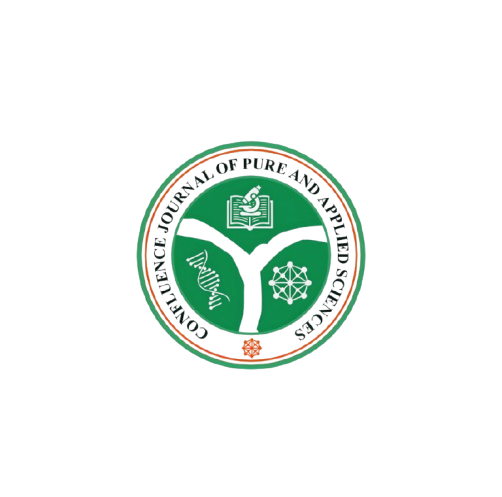BACTERIOLOGICAL AND MYCOLOGICAL QUALITY ASSESSMENT OF WHITE CHEESE (WARA) SOLD WITHIN ANGUWAN SARKI MARKET,KADUNA, KADUNA STATE, NIGERIA
Keywords:
Wara, proximate, fungi, antibiogramAbstract
Bacteriological and Mycological quality of locally sold cheeses (''wara'') from Anguwan Sarki market were assessed. A total of fifteen (15) samples were collected but three (3) were randomly selected and analyzed for proximate composition using standard techniques. Total bacterial and fungal counts using pour plate method and characterization of the bacterial isolates were done using cultural, morphological and biochemical tests. Mycological identification was done using macroscopic and microscopic technique after staining with lactophenol cotton blue. Antibiogram of selected antibiotics/antifungal agents against the bacteria and fungi isolates were investigated. The result from the proximate composition revealed that sample 1 had a moisture content of (63.6%), Ash content (0.61%), protein content (12.8%), fat content (13.5%), and carbohydrate content (9.51%). Sample 2 had a moisture content of (64.1%), Ash content (0.55%), protein content (12.8%), fat content (13.5%), and carbohydrate content (9.51%). While Sample 3 had a percentage moisture, ash, protein, fat and carbohydrate contents of 63.7%, 0.59%, 12.5%, 12.9%, 10.2% respectively. Four (4)bacterial species were isolated from the cheese: Lactobacillus sp was isolated from samples W1, W4,W8 W9 and W11Streptococcus sp was isolated from sample W1,W2,W6,W7,W8,W14 and W15, Bacillus sp was isolated from sample W4,W7,W11,W12 and W13,Staphylococcus aureus was isolated from all of the samples and the fungal species isolated were Aspergillus fumigatus and Aspergillus niger and were isolated from all samples except W11,W12,W13 and W14. Saccharomyces cerevisiae was isolated from W1,W6and W15while Mucor sp was isolated from samples W1,W2,W3,W4,W8,W9,W10 and W11.Sensitivity tests on both bacterial and fungal isolates showed high susceptibility of the organisms to antibiotics especially Pefloxacin (10µg), Amoxacillin (30µg), and Streptomycin(30µg) for bacteria and antifungal agents such as Amphotericin B(50mg/ml) which is highly significant to public health. These microorganisms could be from the food handlers, production utensils, and the environment. The application of Good manufacturing practice (GMP) and HACCP concepts/systems in cheese processing and production will improve safety and consumers confidence in the product. Improvement in the sanitary practices during the preparation and retail of cheese is highly recommended.
Downloads
Published
Issue
Section
License
Copyright (c) 2025 Confluence Journal of Pure and Applied Science

This work is licensed under a Creative Commons Attribution 4.0 International License.



